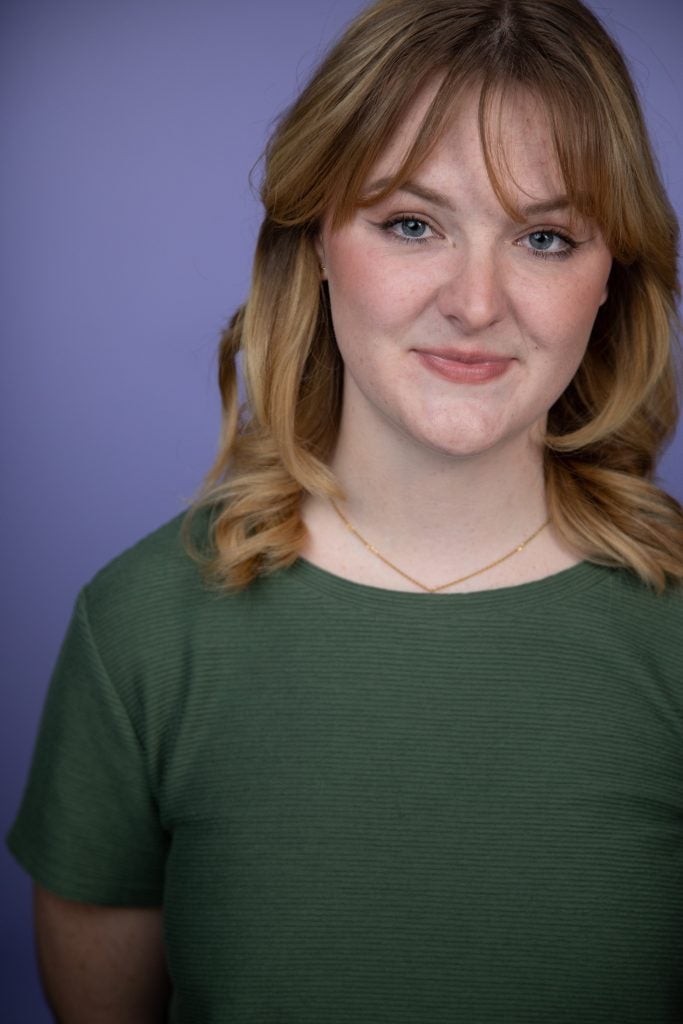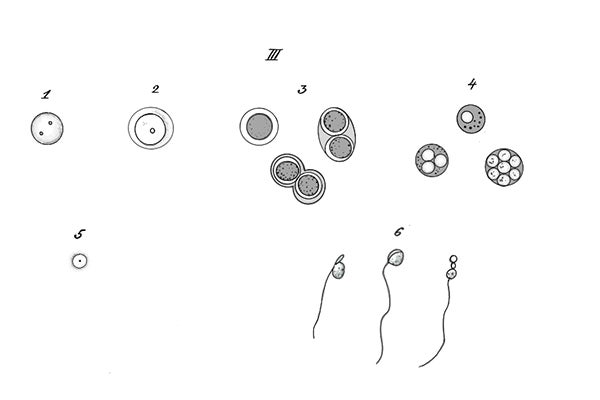Student illustrations bring new life to 19th century manuscripts
It all started with an email.
East Carolina University Honors College student Delaney Meginniss read an email about a possible job for art majors or those interested in art and was intrigued. Although she’s an active participant in the arts as a theatre arts major, Meginniss has had a passion for drawing since she was a child.

Delaney Meginniss, an East Carolina University Honors College student and theatre arts major, recreated images from a 19th-century scientific manuscript using her iPad and Procreate, to accompany the translated work. (Contributed photo)
“I don’t get to draw very often,” she said. “I sing and dance and act all day. I’m also a tour guide and I’ll always say that I love the Honors College because I can do all of the art that I want to do.”
The email came from ECU’s Todd Fraley, interim dean of the Honors College, describing the work with Chris Geyer, associate professor in the Department of Anatomy and Cell Biology, on one of his side projects — the translation of scientific manuscripts from the 1800s that focus on spermatogenesis, the field in which he works. Meginniss would recreate all of the images that accompanied the manuscripts.
“Like many fields, it originated in the mid-1800s as microscopes became available,” Geyer said. “Mostly Germany and Austria were where the bulk of the activity in science was taking place at that time.”
After expressing her interest in the illustrative work, Meginniss met with Geyer at the East Carolina Heart Institute to learn more about the project and her role in it.
“He explained to me what everything was and what the figures were actually showing, which was kind of neat,” she said. “I enjoyed listening to him talk about the work he does. I love when people are passionate about what they do.”
Recreating the illustrations was an almost relaxing task for Meginniss to accomplish over winter break. To create the high-definition images, she used her iPad and Procreate, a digital illustration application.
“On the original manuscript, it’s like a lot of really small dots around and some of them, it was very obvious that it was a little nuclei, where there was a circle with a dot in the middle,” she said. “I had to decide before I started shading any of them what my standard was going to be.”
According to Geyer, the illustrations in the manuscripts were mainly drawn by hand as the scientist observed the tissues in the microscope or projected onto the wall with a device called a camera lucida. Many of the books that contain the manuscripts are yellowed, faded or have water stains.
“One of the things Delaney had to do was use her imagination a little,” Geyer said. “I wanted her to redo the artwork, so it was faithful because we’re not redoing it to add our own slant. We’re sort of recapitulating the original artwork with a high-resolution image using today’s technology.”
Meginniss isn’t the first honors student to work with Geyer. In addition to undergraduate students who work in his lab, Geyer reaches out to the Honors College when he’s working on the translation of a new manuscript.

A sample of Meginniss’ recreated artwork.
“We are extremely grateful for partnerships like the one we have with Dr. Geyer as they provide our students with unique and exciting opportunities to learn and grow during their time at ECU,” Fraley said. “Delaney is a wonderful example of the intellectual curiosity and diversity of talent and interests we see every day in our students.”
In addition to students like Meginniss, Geyer has collaborated with foreign language faculty for the translation work, specifically Susanne Jones in the ECU Department of Foreign Languages and Literatures.
While these manuscripts don’t contain new scientific developments, they do hold a unique purpose in providing a historical context as well as giving credit for discoveries to 19th century scientists.
“I like to know where we came from and I think, in some ways, it’s almost giving posthumous credit,” Geyer said. “A lot of these old manuscripts have sort of been lost. They exist in this untranslated form, and people just ignore them.”
Geyer said that reading these older manuscripts can be beneficial for students as well to provide a deeper understanding of the field.
“A lot of the things they argued about 100 years ago or 50 years ago, we’re still debating today but we’re just doing it with better technology,” he said. “When you educate students, I think it’s good for them to have a context for ‘What are the fundamentals? What are the things that are still unknown?’”